吉首美術館,湖南 / 非常建筑
一座橫跨江面的廊橋
設計公司:非常建筑
位置:中國
類型:建筑
材料:金屬 鋼 混凝土 玻璃
標簽:Hunan Jishou 吉首 湖南
分類:展廊 展覽類建筑 文化建筑 美術館
社會工程 | A Social Cause
美術館所在的吉首市是湘西土家族苗族自治州的州府。起初地方政府考慮在城外的開發區內選擇建設用地,然而我們作為建筑師則建議將美術館設立在人口密集的乾州古城的中心區,因為我們認為文化設施應該盡可能地方便居民使用。穿城而過的萬溶江流經吉首的核心地帶,因此我們構想了一座橫跨江面、兼做步行橋的美術館。我們希望人們不僅會專程去欣賞藝術,也可以在上班、上學、或者購物的途中與藝術邂逅。
▼美術館鳥瞰,bird’s-eye view ©田方方
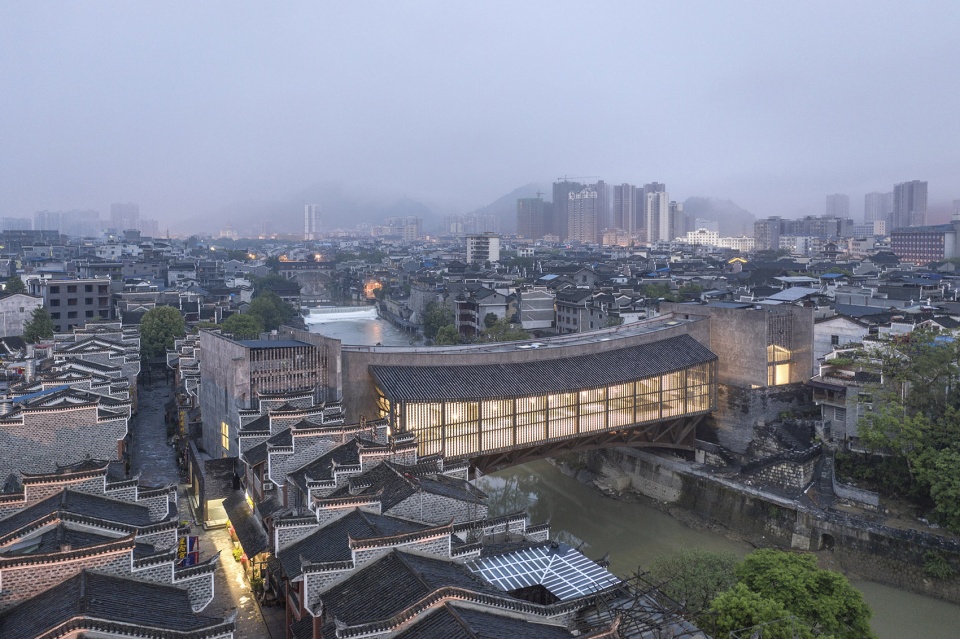
The city of Jishou, where the Jishou Art Museum is located, is the regional capital of Xiangxi (western Hunan), a minority autonomous zone. Initially, the municipal government considered parcels of lands in the development zone outside the city; however, we the architects proposed to build the art museum in the center of the old town because we believed that a cultural facility should be easily accessible. A river called Wanrong runs through the middle of Jishou, which makes the most central location for the art museum over the water course and the art museum then doubles as a pedestrian bridge naturally. We hope that people in Jishou would not only make a special trip to see art but will also encounter art on their way to work, to school, or to shop.
▼黃昏中的美術館,JAM in early evening ©田方方
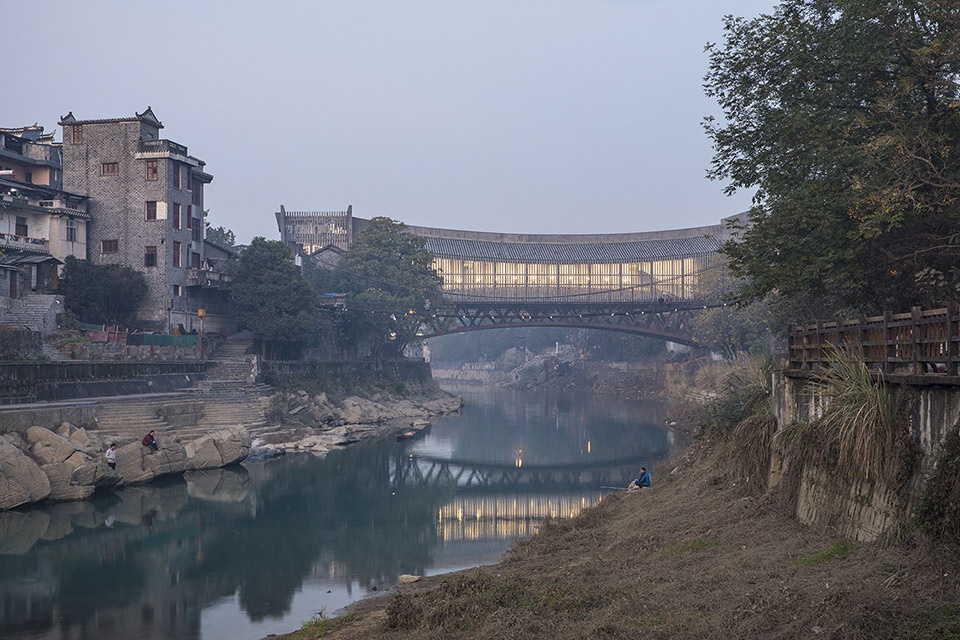
插入肌理 | Urban Intervention
如今,許多諸如博物館和劇院的當代文化設施都被當作獨立的紀念物而遠離社區。我們認為美術館不應該從區位上脫離受眾,因此將其嵌入到現有的城市肌理中,兩岸的橋頭部分與萬溶江畔的排屋緊密相連在一起。這些排屋包含了店鋪、餐館、小旅館,樓上通常便是屋主的居所。因此,吉首美術館位于河兩岸的入口都可以被視作混合功能街道界面的一部分,從而融入當地人的日常生活。
▼吉首美術館嵌入現有城市肌理,JAM as an insertion in existing urban fabric ©田方方
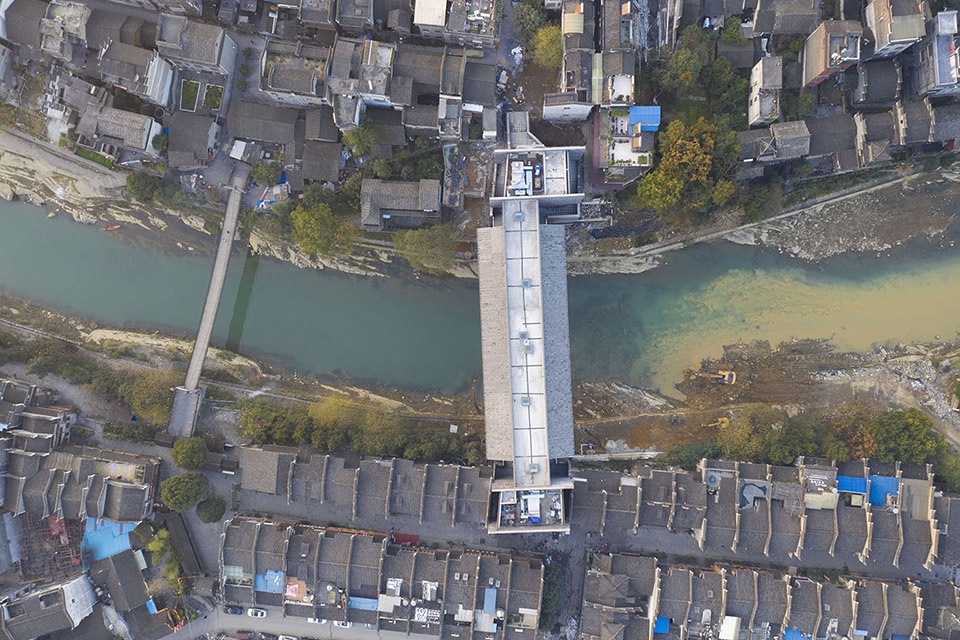
Typical contemporary cultural institutions in China, such as museums and theaters, are treated as freestanding monuments, from away from the communities. In Jishou, since we think an art museum should not be isolated from its users, it is inserted into the existing urban fabric, which is built up with row buildings along the Wanrong River that house shops, restaurants, bed-&-breakfests, often with owners living upstairs. Therefore, the front entrances of the Jishou Art Museum on both riverbanks are part of the mixed-use street walls and integrated into the everyday life.
▼東側入口,JAM East Side Entrance ©田方方
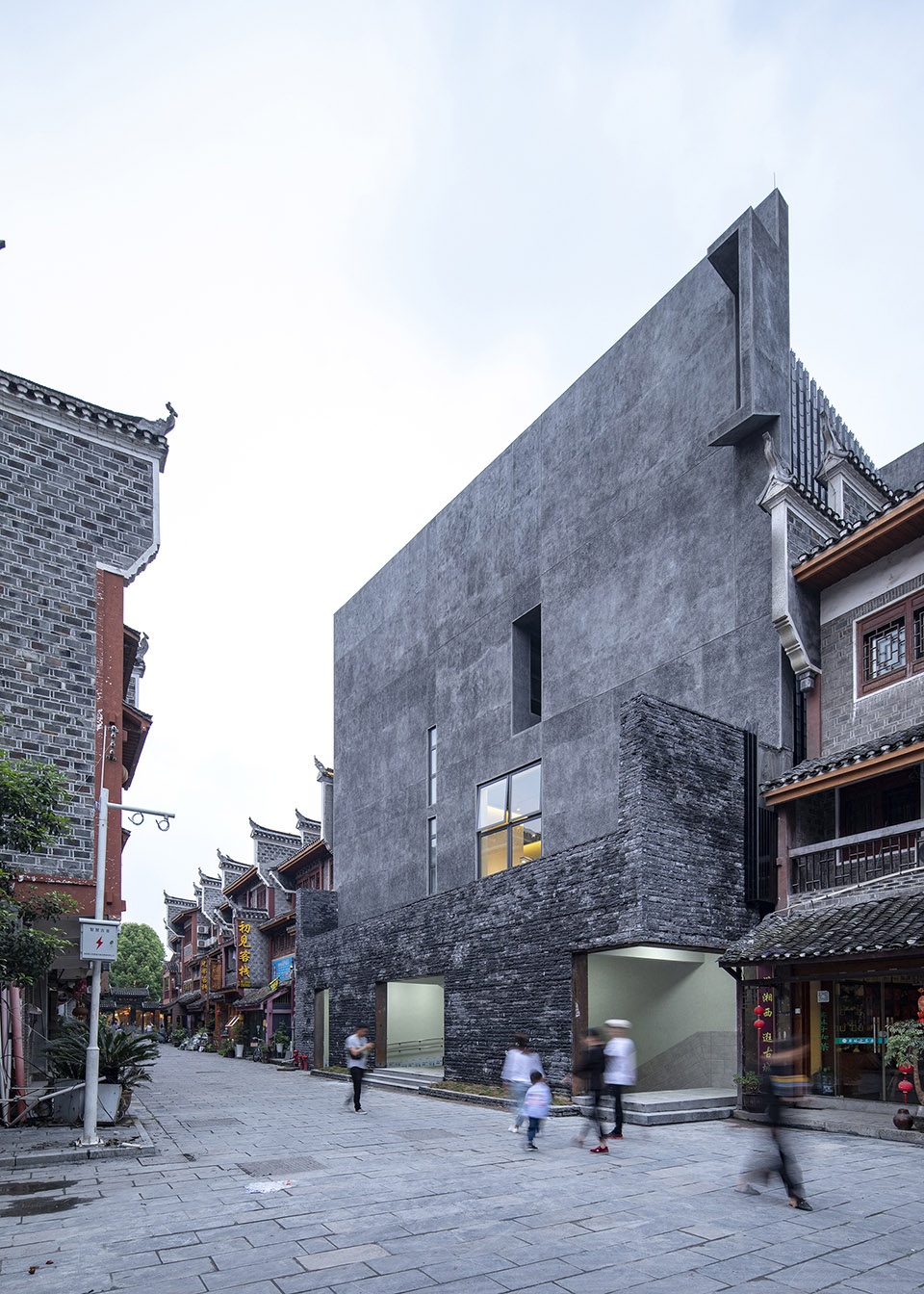
▼從相鄰街道看吉首美術館,Looking at JAM from nearby street ©田方方
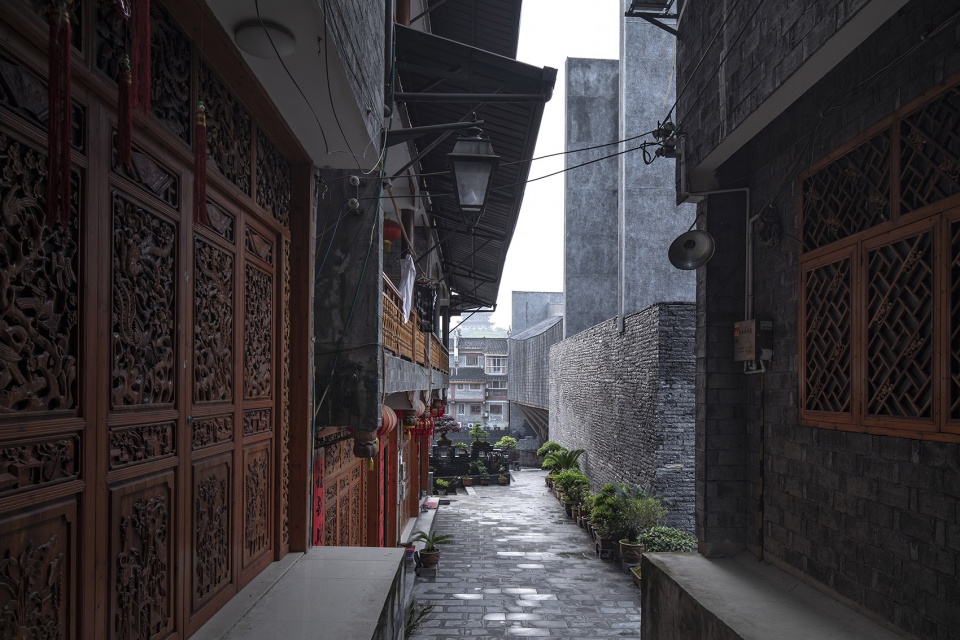
▼西側入口,JAM West Side Entrance ©田方方
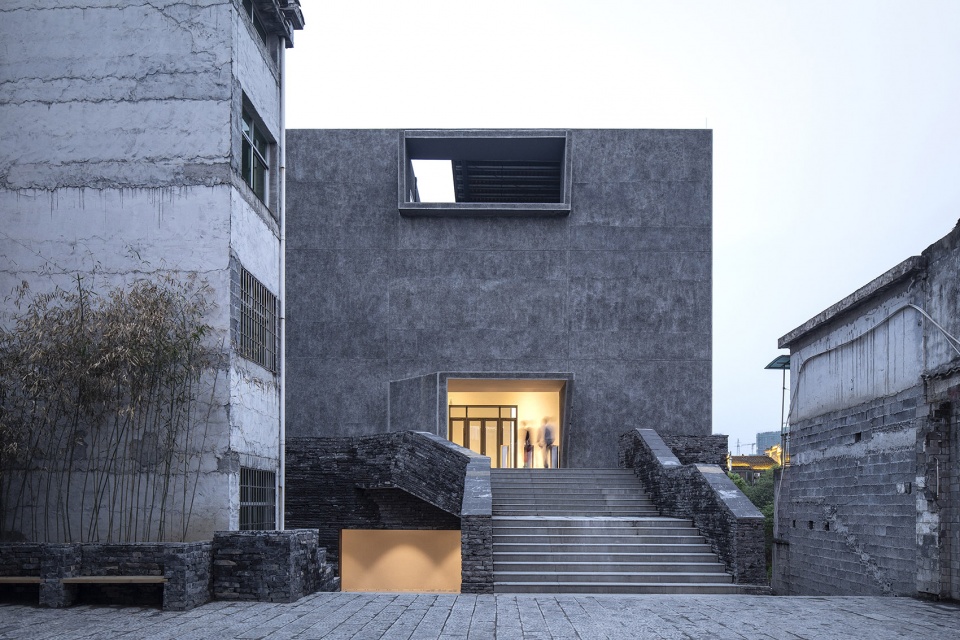
▼西立面局部,JAM West Facade close-up ©田方方
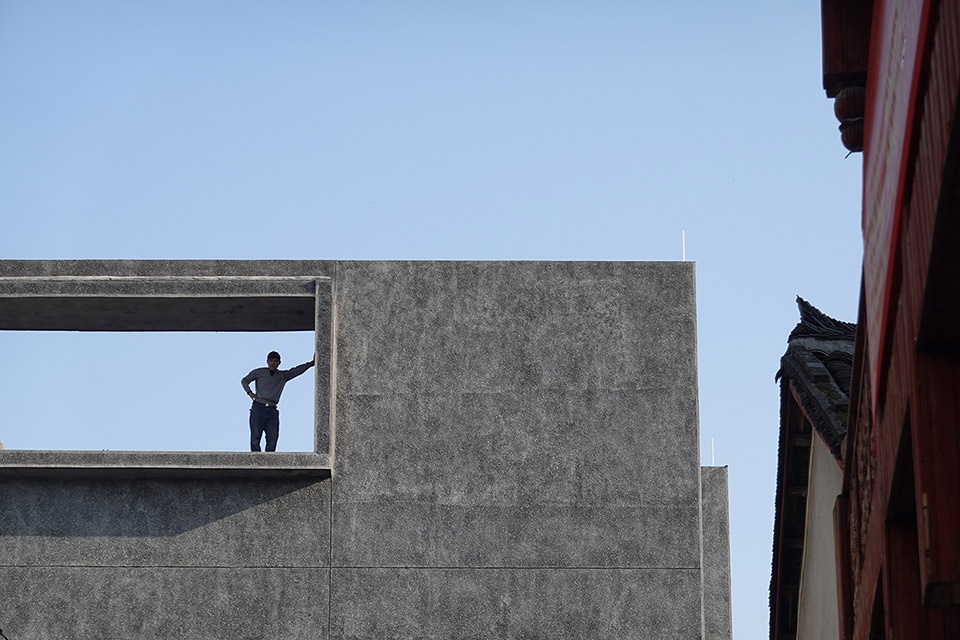
轉釋傳統 | Reinterpretation of Tradition
被稱作風雨橋的廊橋在我國山區里有著悠久的歷史。除了跨越河流或山谷的功能,它們也是供旅人休憩、商販擺攤售賣的公共空間。作為對這一古老建筑類型的當代詮釋,我們的設計在保持傳統廊橋的交通與歇腳功能的同時引入新的藝術內容,并將風雨橋的形式語言加以現代化。
▼風雨橋,Fengyu Qiao
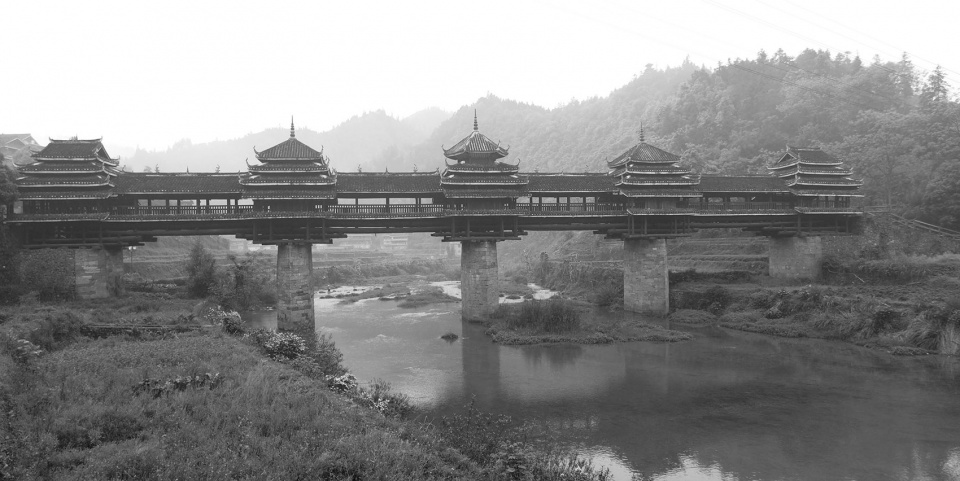
Covered bridge has a long tradition in this mountainous region of China and named Fengyu Qiao, meaning wind-and-rain bridge, which is not only used for crossing river or valley but a public space where travellers take a rest and vendors set up stands. Our design creates a contemporary interpretation of the age-honored building type. We introduced art as a new program on a covered bridge while maintaining pedestrian traffic and stop meanwhile translating the formal language of the Fengyu Qiao into a modern one.
▼萬溶江上的吉首美術館,JAM over Wanrong River ©田方方
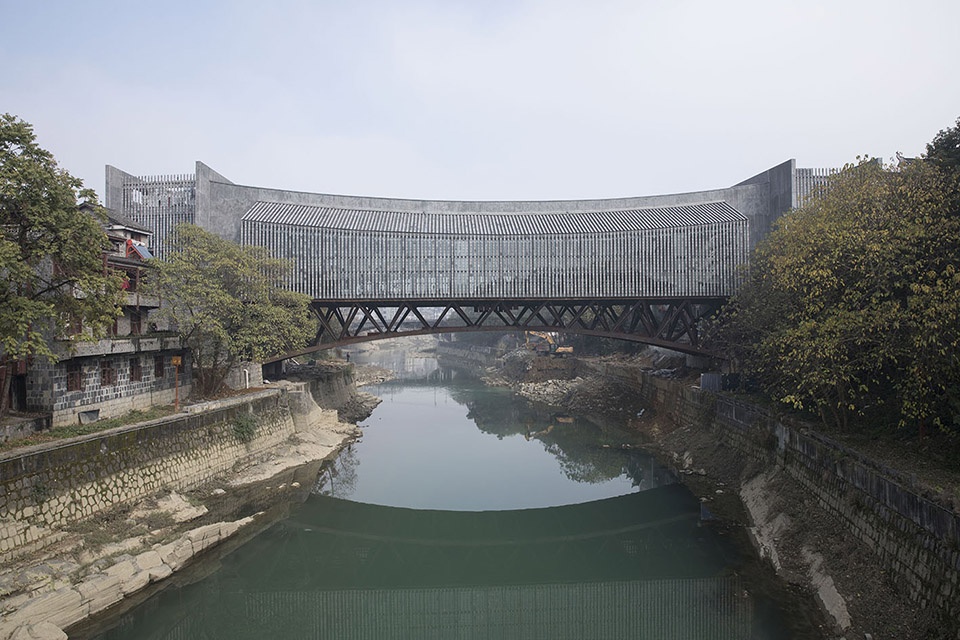
橋梁建筑 | A Bridge-Building
美術館以橋上橋的形式構成。下層的鋼橋是開放的桁架結構,為行人通過提供了一個帶頂的街道,同時也助于疏導洪流;上層的現澆混凝土拱橋內部設有畫廊。兩橋之間是一個由玻璃幕墻和筒瓦遮陽系統圍合而成的大展廳,用于舉辦臨時展覽。美術館的服務空間如門廳、行政辦公、商店和茶室則被安置在兩端的橋頭建筑內。人們可以從任意一側河岸進入美術館。
▼雙層橋設計分析圖:鋼橋上的混凝土橋,design concept: a concrete bridge on the top of the steel bridge
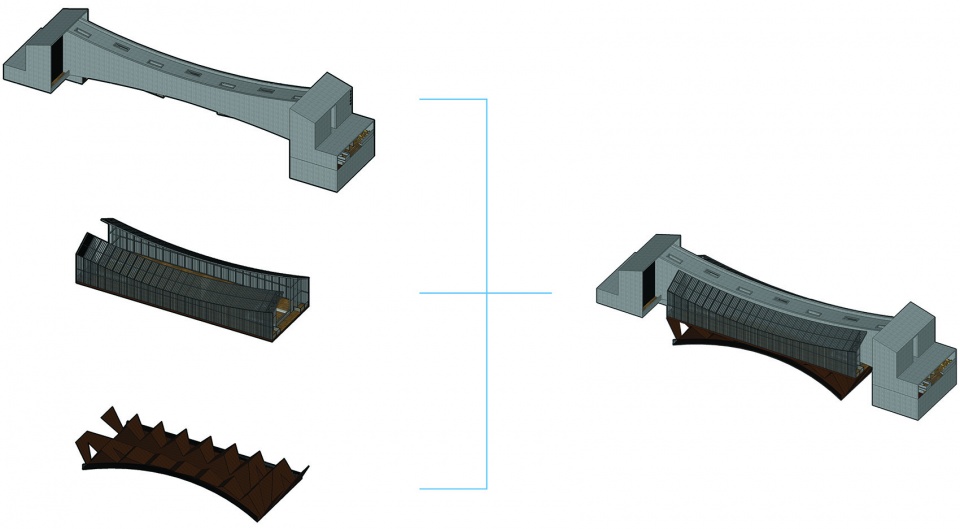
The art museum is composed of two bridges, one on the top of the other. The lower level is an open steel truss structure that resembles a roofed street for pedestrians and allows the flow of floods ; the upper level is a concrete arch cast in-situ with a painting gallery inside. In between the two bridges, glazed walls and tiled shading system enclose the art museum’s main hall for temporary exhibitions. Supplementary spaces to the art museum, such as the entrance hall, administrative office, shop, and tearoom, are situated in the two bridgeheads at either end. People can enter the museum from either side of the river.
▼鋼結構橋局部,JAM steel bridge structure close-up ©田方方
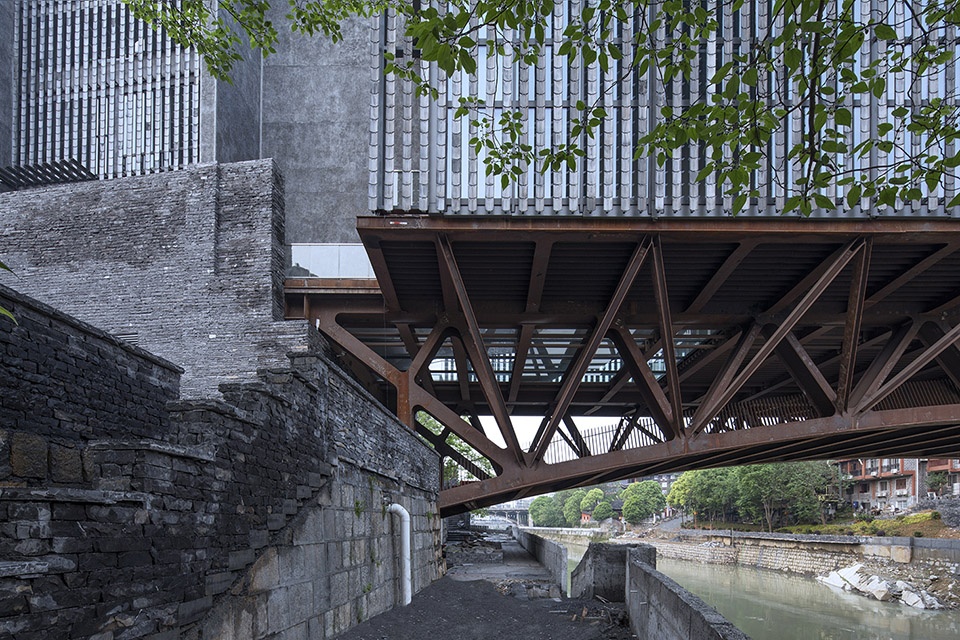
▼橋身立面筒瓦遮陽系統,JAM riverside facade with tiled shading ©田方方
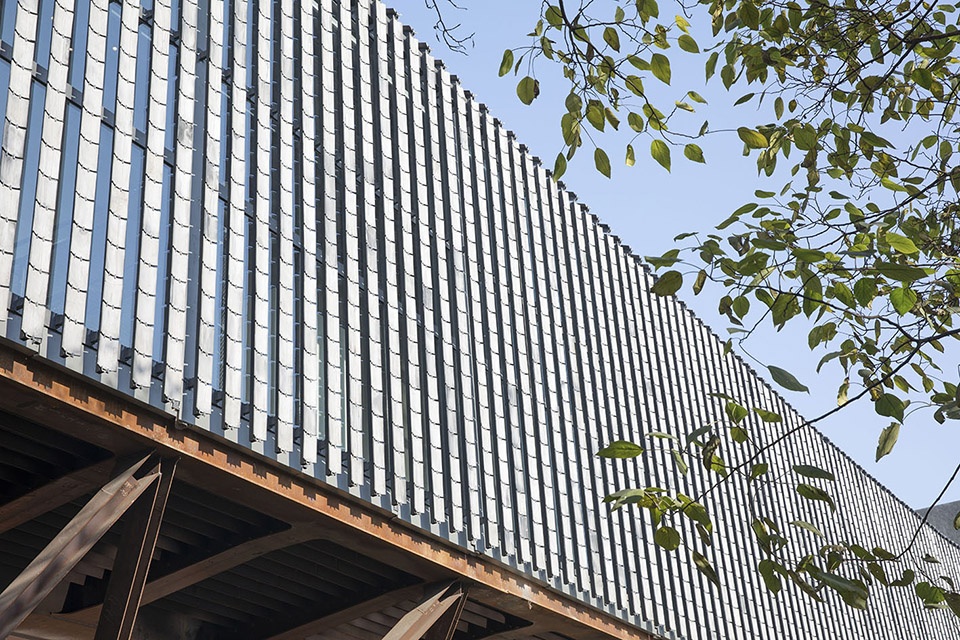
▼透過步行橋天窗仰望大展廳,JAM Pedestrian Bridge Level with skylight looking into Great Exhibition Hall ©田方方
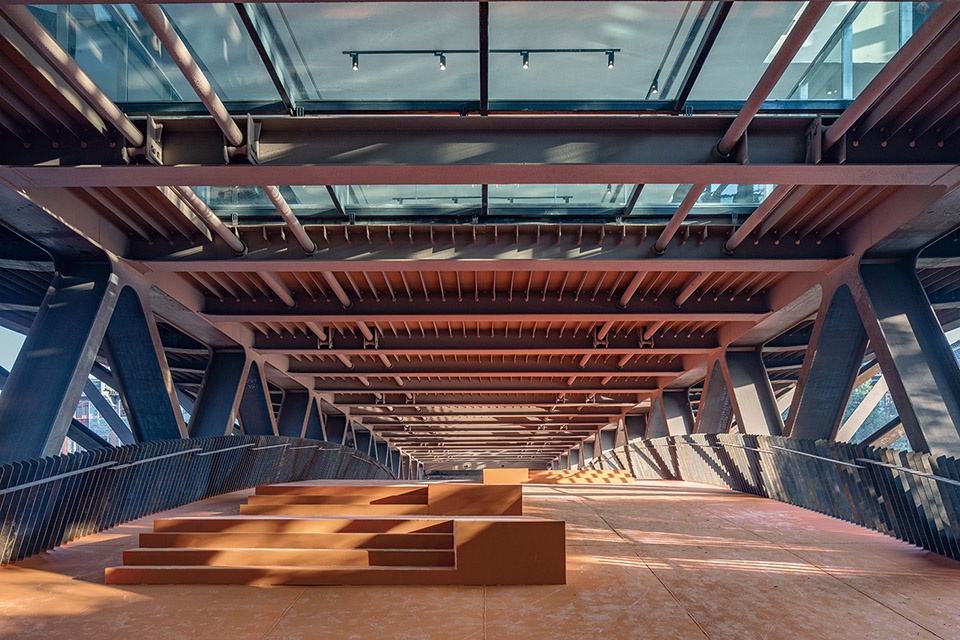
▼步行橋層,JAM Pedestrian Bridge Level ©田方方
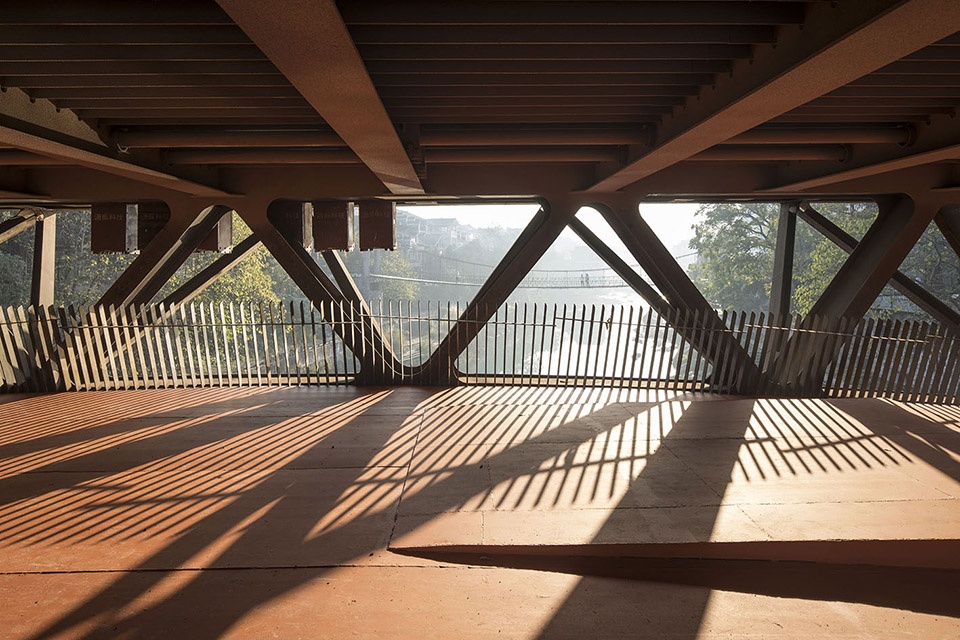
▼大展廳,JAM Great Exhibition Hall ©田方方
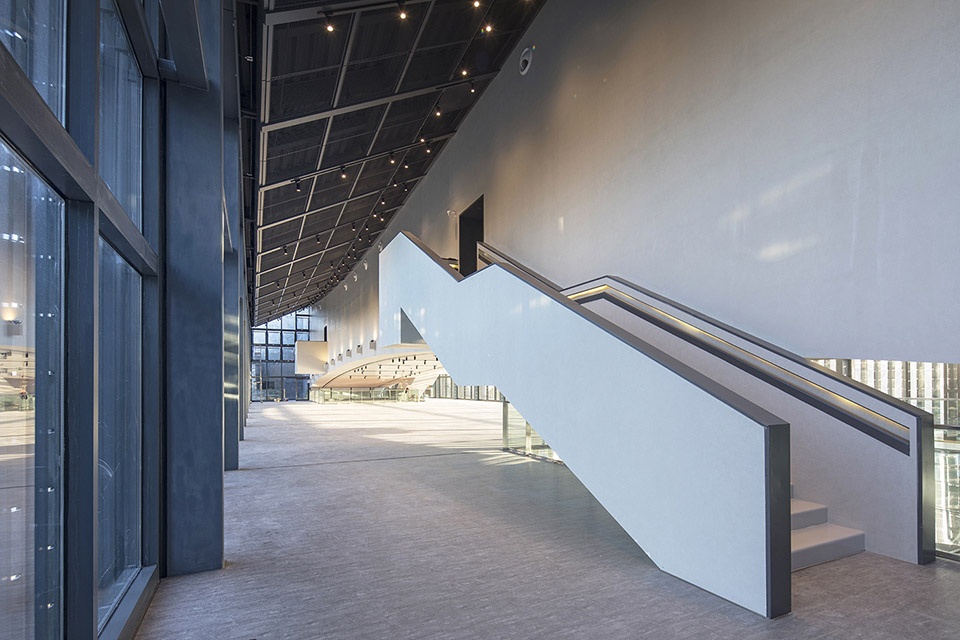
▼大展廳內混凝土拱橋下方,JAM Great Exhibition Hall under the concrete bridge ©田方方
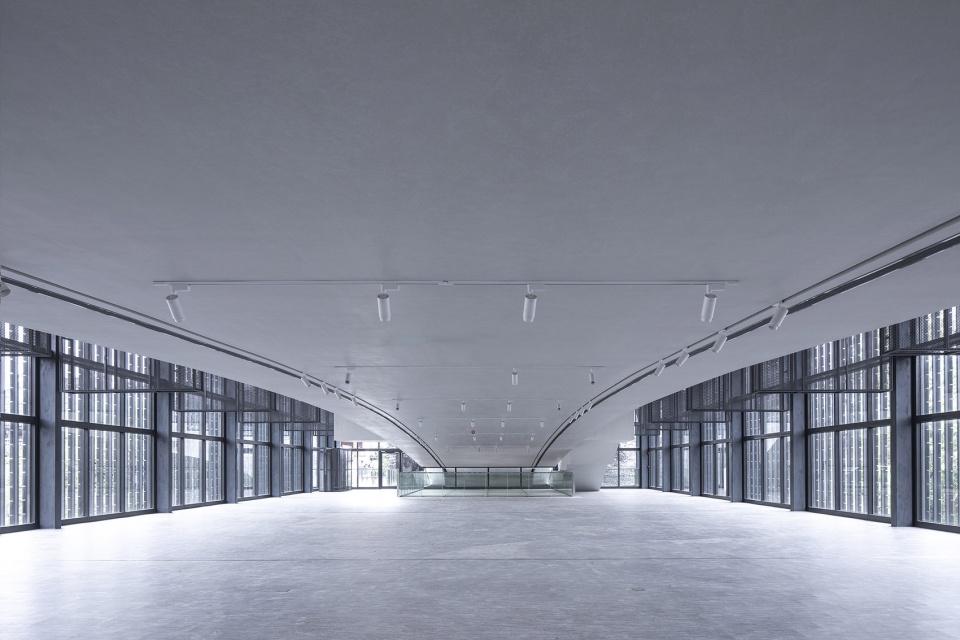
▼由三樓平臺看大展廳,JAM Great Exhibition Hall from 3rd floor balcony ©田方方
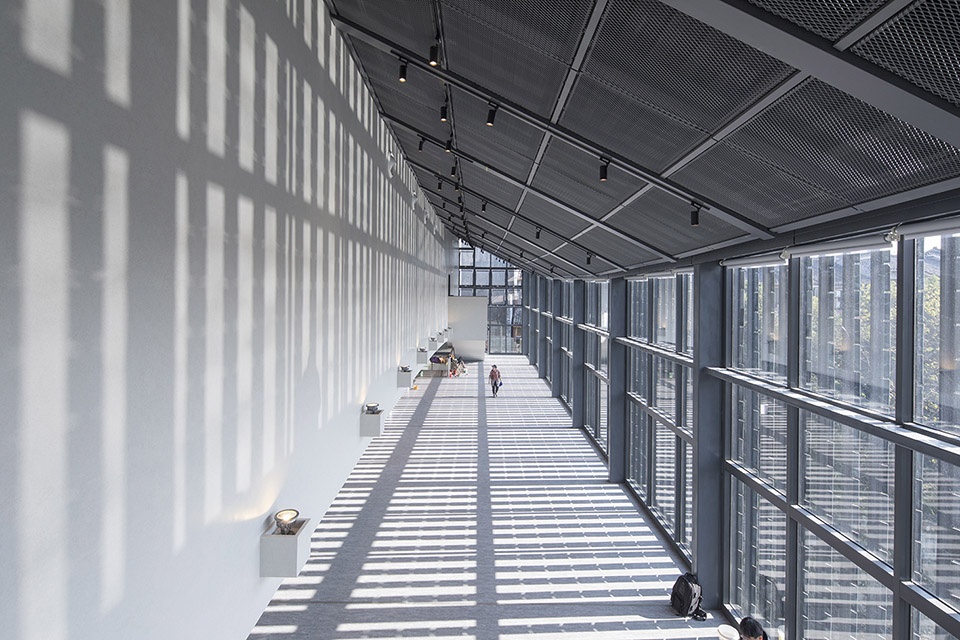
▼三樓混凝土拱橋內部畫廊,JAM 3rd floor Painting Gallery inside concrete bridge ©田方方
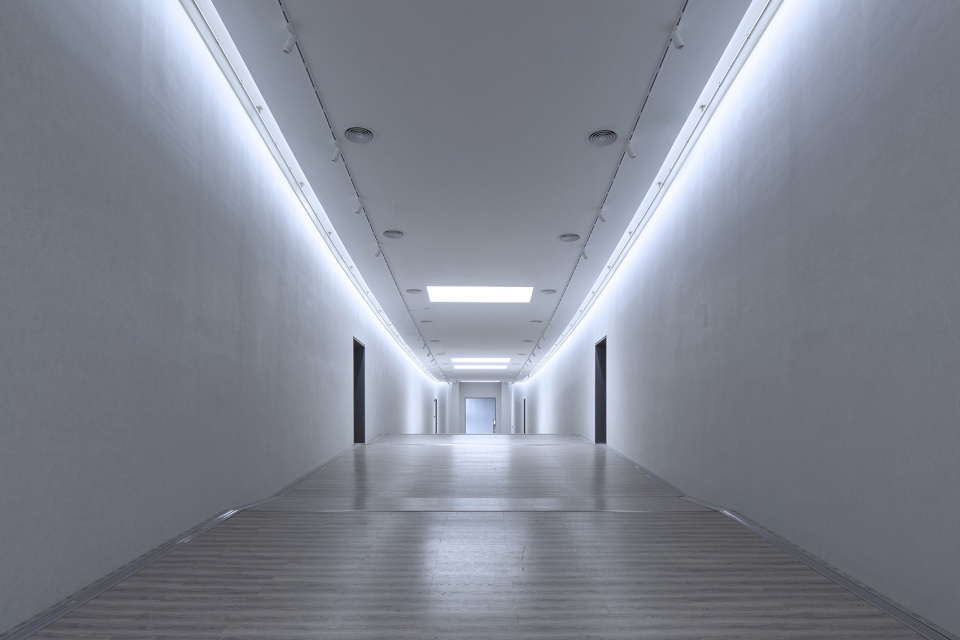
▼過渡空間左墻上的混凝土預應力錨索緊固件,JAM transitional space with post-tensioned prestressing bolt for concrete bridge structure on left wall ©田方方
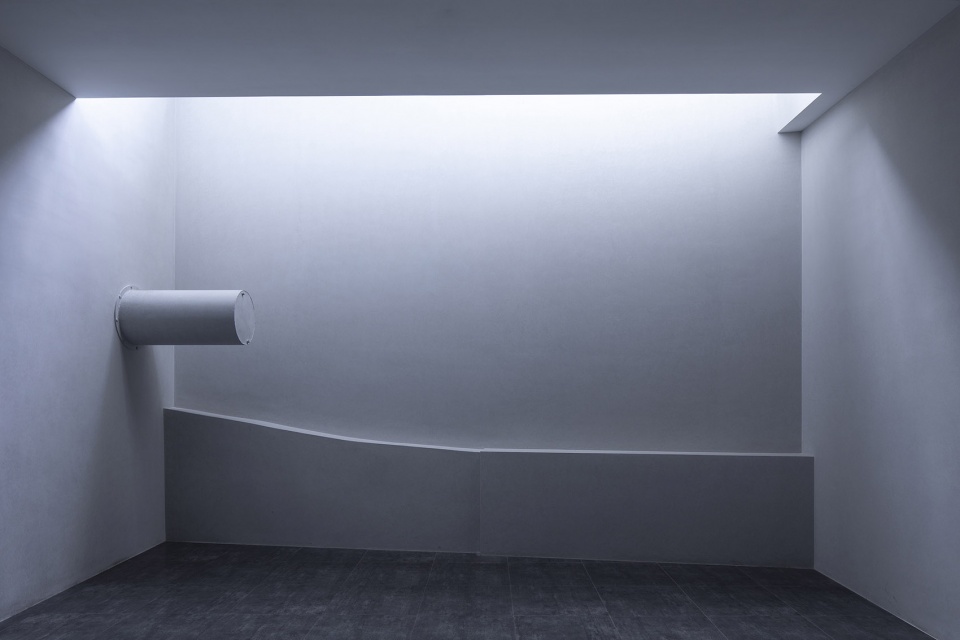
吉首美術館是藝術家黃永玉先生倡議并捐贈的成果,于2019年4月完工,首展將于夏季開幕。
Jishou Art Museum is the outcome of artist Mr. Huang Yongyu’s initiation and donation, completed in April 2019 and will have its opening exhibition in the summer.
▼東側入口大廳,JAM East Entry Lobby ©田方方
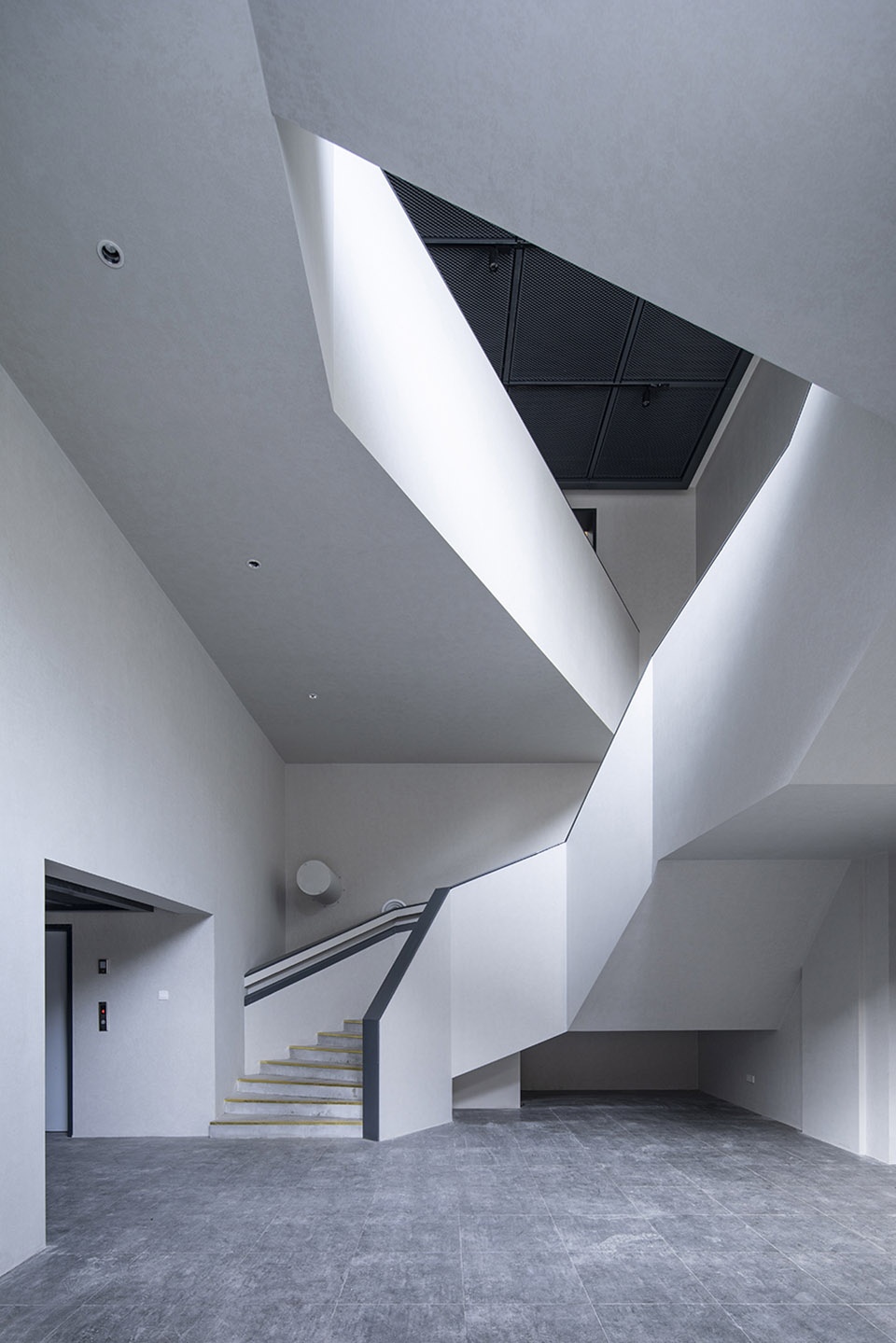
▼東側大廳樓梯間,JAM East Lobby Staircase ©田方方
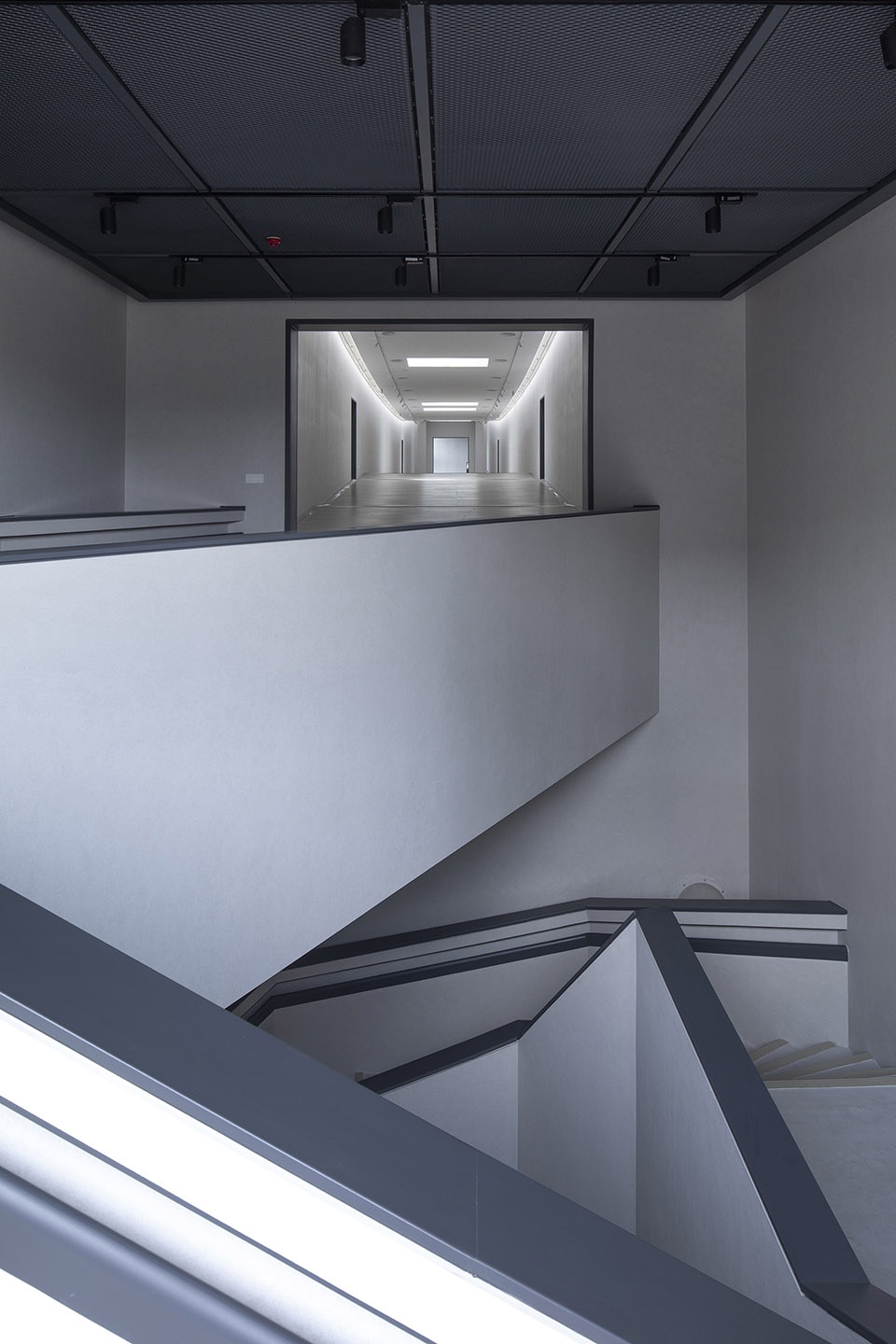
▼大廳末端玻璃幕墻,JAM End Glass Wall of Great Exhibition Hall ©田方方
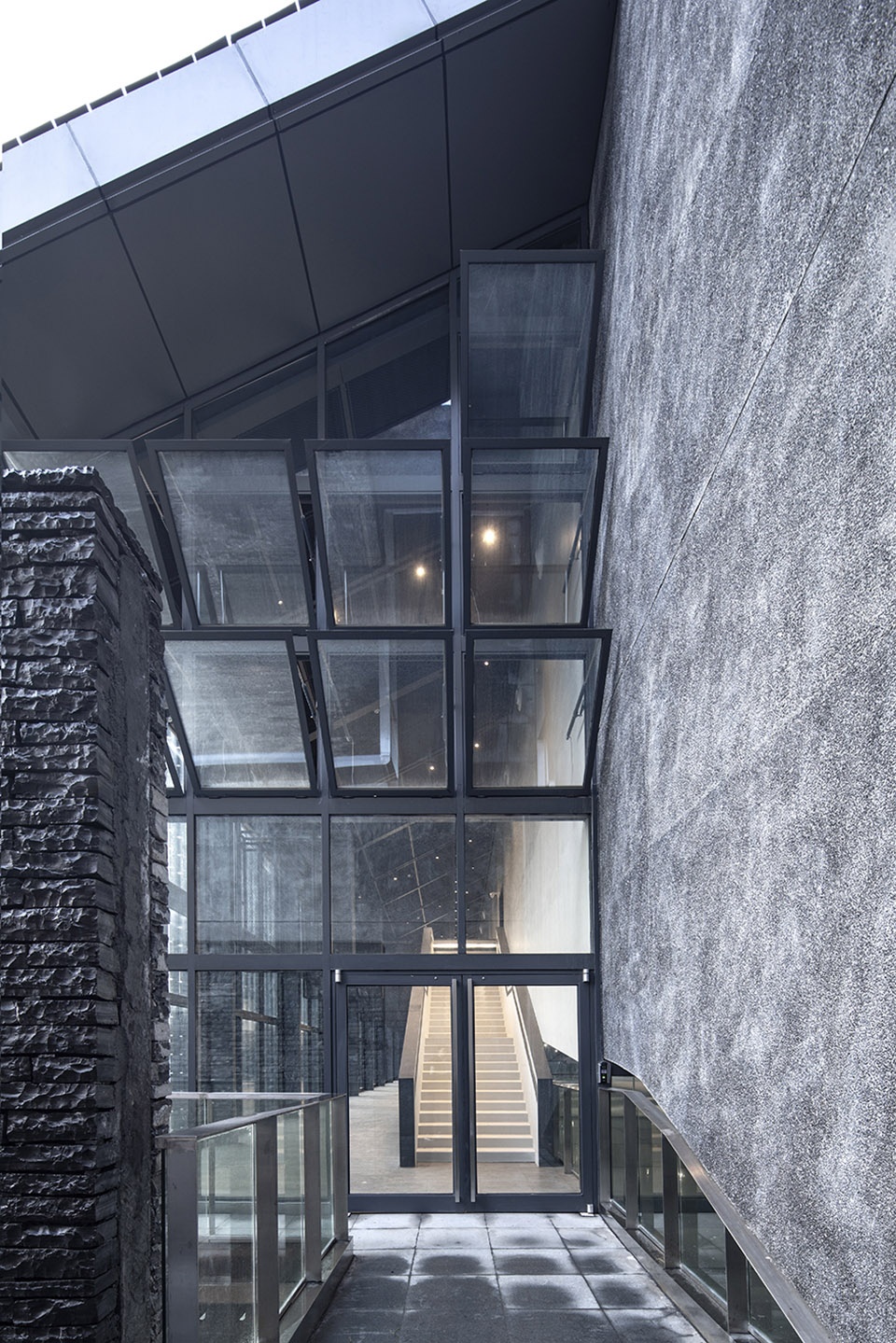
▼總平面圖,site plan
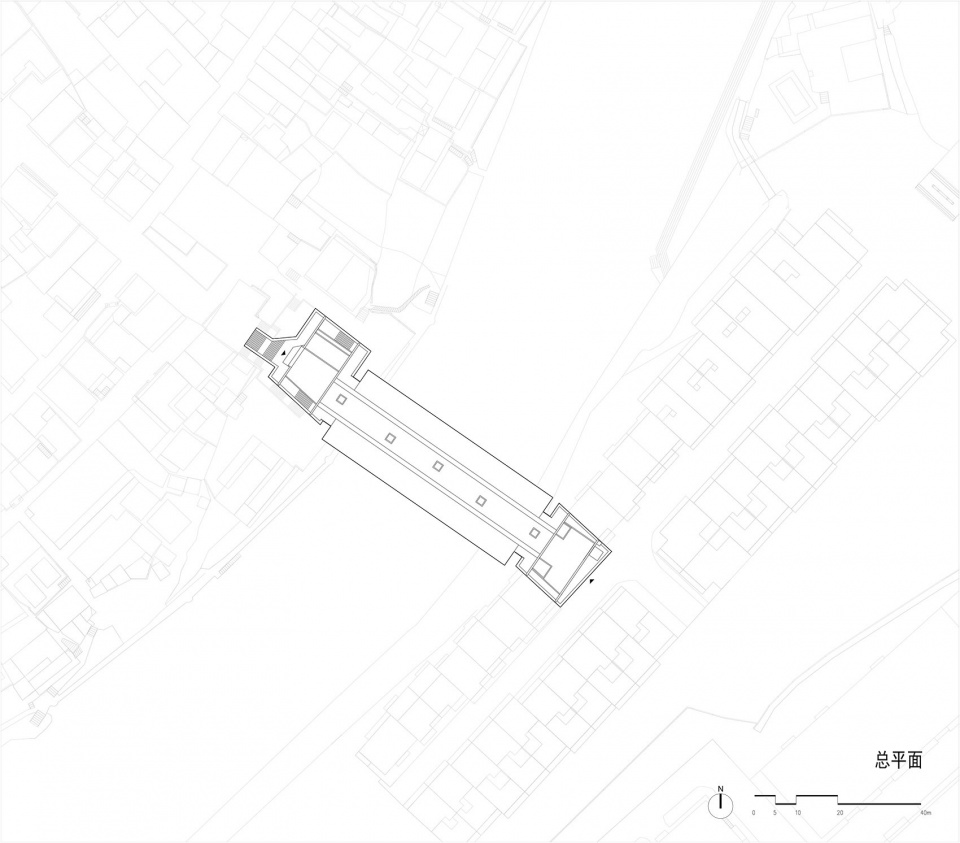
▼首層平面圖,1F plan
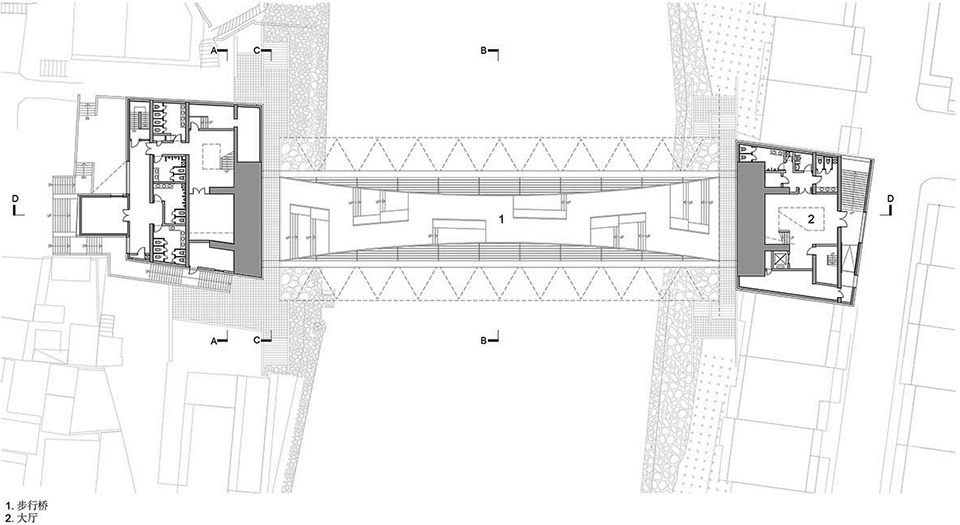
▼2層平面圖,2F plan

▼3層平面圖,3F plan

▼西立面圖和南立面圖,west elevation and south elevation
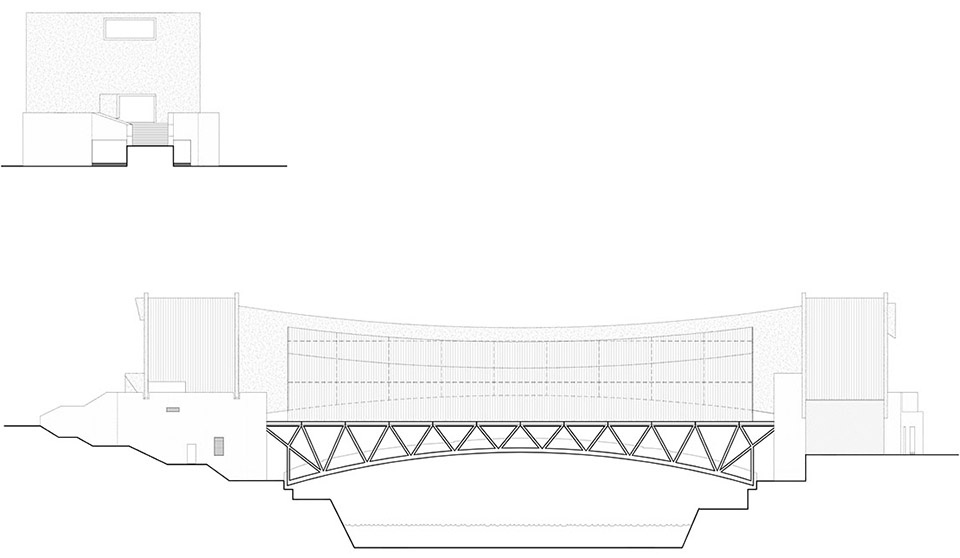
▼剖面圖,sections
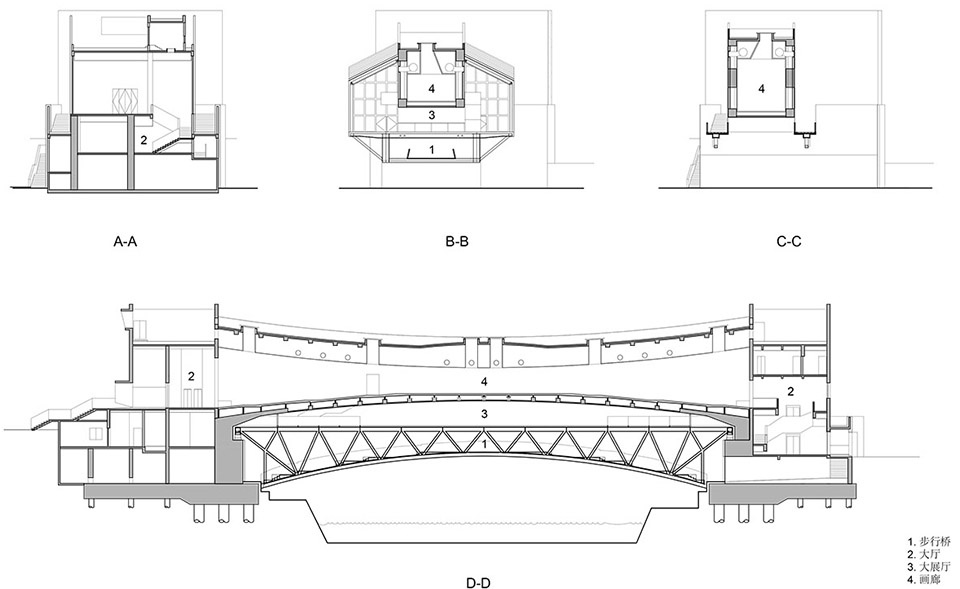
客戶/Client: 吉首市德夯風景名勝區管理處/ Jishou Qiangzhou Historic Town Administration
地點/Location: 湖南省吉首市乾州古城/Qiangzhou Historic Town, Jishou, Hunan, China
類型/Building Type: 文化建筑/Cultural Architecture
項目主持設計/Principal Architects: 張永和, 魯力佳/Yung Ho Chang, Lijia Lu
項目團隊/Project Team: 梁小寧,楊普,劉昆朋,粟思齊,饒崗/Liang Xiaoning, Yang Pu, Liu Kunpeng, Su Siqi, Rao Gang
結構咨詢/Design Consultant: 常鏹/Chang Qiang
建筑面積/Building Area: 3535.4m2
結構材料/Structure and Material: 鋼桁架結構,鋼筋混凝土拱結構/Steel truss, reinforced concrete arch
設計時間/Design Period: 2013-2016
竣工時間/Completion Time: 2019
攝影師/Photographer: 田方方/Tian Fangfang
來源:本文轉載自谷德設計網(gooood)
我們重在分享,尊重原創。如涉及作品內容、版權和其它問題,請與本網聯系,我們將在第一時間刪除內容!
- 時間 2019-05-08 /
- 作者 /


